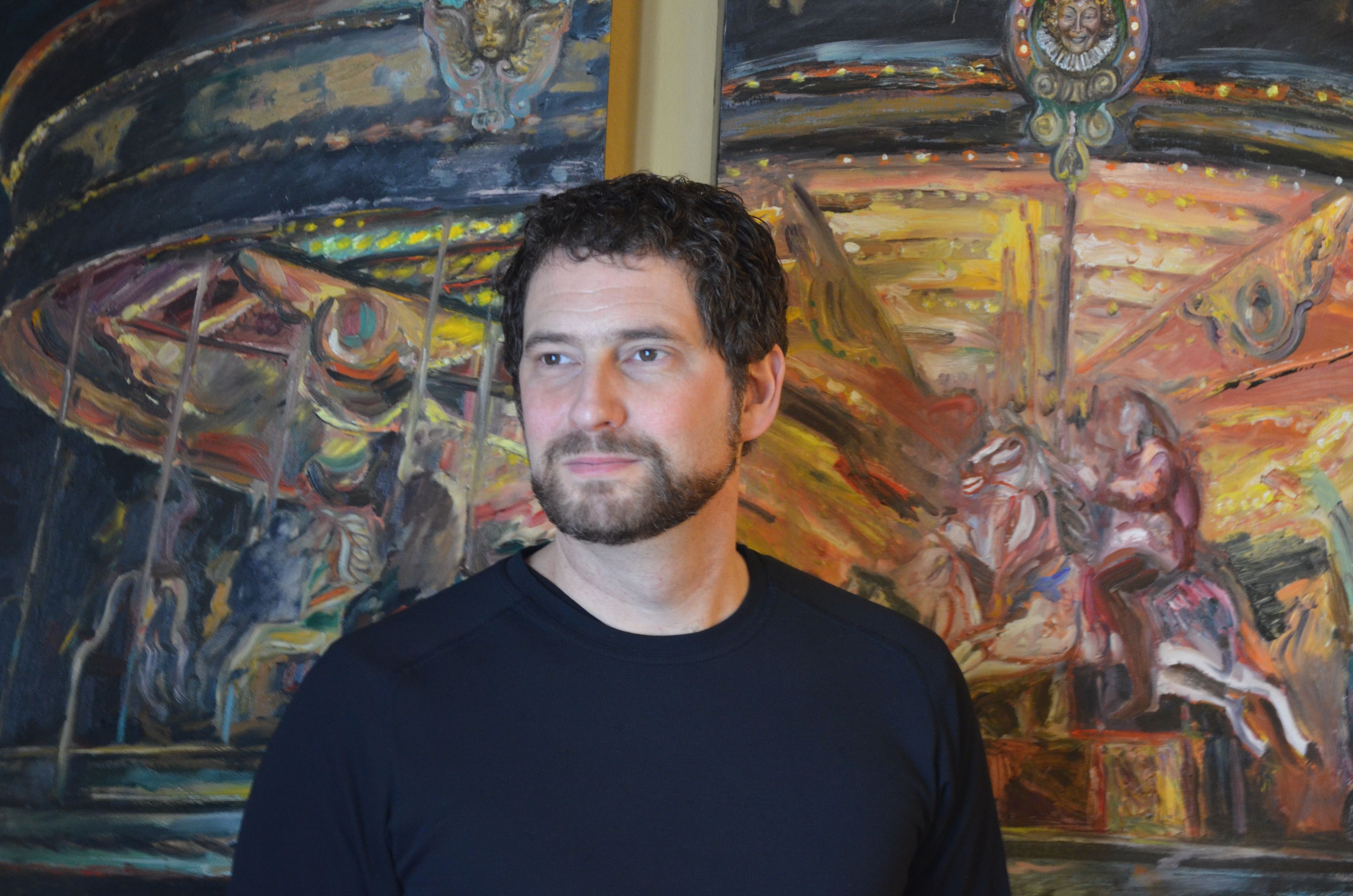Bestselling author Kenneth Oppel shares advice on creating spooky stories that are full of suspense.

After writing books about a teenaged Victor Frankenstein (This Dark Endeavour), a strange baby growing inside a wasp nest (The Nest), murderous plants colonizing the planet (Bloom), and now a ghost story, people understandably tend to think I write spooky books. I myself like to think of them more as suspenseful and pleasantly creepy. But here's a few things I've learned that might help you with your own story – spooky or not.
Contrast is everything in drama. There can be no sadness, no triumph, no suspense without seeing its opposite – or if not its exact opposite, a very different emotional hue from the vast palette of human emotions. Just as you can't truly participate in a hero's victory if you never knew how much they stood to lose and how horrible failure would have been, you can't be truly scared if you haven't also felt truly safe.
Everyone expects a scare when someone is creeping through a dark, creaking house holding a guttering candle (and how I do love a guttering candle!); but isn't it much more shocking when something scary happens right after someone has laughed, or relaxed into the embrace of a loved one. The juxtaposition of these two very different events amplifies the power of both. If everything in a story is scarifying, then nothing is. It would be like listening to an entire song with the volume on 10 (or 11 if it's Spinal Tap). You have nowhere left to go when you want a big effect!
A variety of tones also gives you, as the author, a chance to build the emotional authenticity of your characters, and the realism of your world. I think it's much better if the scary things are happening in a naturalistic world that seems very much like the one you're in, right now. (Like, downstairs, in that dusty area under your sink where you never want to put your hand.)
The unseen is also key. The scariest bits are often best created by our own imaginations (or, in this case, our readers' imaginations.) I always think of the making of Jaws: the mechanical shark was a disaster; it wouldn't work, it sank, it looked cheap, so they had to show it as little as possible – arguably one of the happiest mishaps in film history. Seeing just the fleeting shadow of the vast shark, sensing its speed and power as, invisible, it pulls the entire boat on a harpoon line: so much scarier. Don't give it all away by showing too much. A little hint of what's lurking will be enough to fill the reader's imagination with a tailor-made horror that only they could generate.

Deploy your creepy moments sparingly. In my latest book Ghostlight, I have a moment where the character hears raindrops falling regularly from an eavestrough, then stop for just a moment before resuming, like someone (or something) invisible had just passed underneath. Small details, especially early in the story, can help build a deliciously tingly atmosphere. (I also have a very talkative budgie whose stream of nonsense words suddenly becomes much less nonsensical.) In Coraline, Neil Gaiman pretty much did all his work with a single detail: button eyes. And in the classic horror story, "The Monkey's Paw," a knock on the door may be the most frightening you'll ever encounter on the page.
Ambiguity of character can also be very desirable when writing a suspenseful story. Is that character a friend or a foe? In my book The Nest, a strange wasp angel appears to young Steven and offers to "fix" his sick baby brother. Though this angel is initially nurturing and even maternal, we have to wonder what "fix" actually means.
And perhaps you don't even trust your own narrator? Imagine if your main character, or the person telling the story – the very person the reader must trust to guide them -- reveals themselves to be unreliable, or possibly villainous. I always love it when a secret is revealed, perhaps an event from the past, a grievance, a vengeful plan. In Vera Brosgol's Anya's Ghost, a forlorn and lovable ghost girl turns out to be rather more complicated.
Your characters don't need to be binary (hero or villain): like all of us, characters are a fascinating mix of things: the good, the bad and the ugly. Let's see all of it. Sometimes the scariest things of all are not ghosts or demons, or double-jointed crab-walking mutants, but ourselves, and what we're capable of.
Ghostlight by Kenneth Oppel publishes in October 2022 with Guppy Books
Kenneth Oppel is the bestselling author of many books, including Airborn, which won the Governor General's Award for children’s literature and a Michael L Printz Honor Book Award, and the Silverwing trilogy, which has sold over a million copies worldwide. Some of his other books include The Boundless, Every Hidden Thing, and Inkling. The Nest and Half Brother both won the Canadian Library Association’s Book of the Year for Children Award. Kenneth lives in Toronto with his family.
Twitter: @kennethoppel | Instagram: Kenneth.oppel
Comments